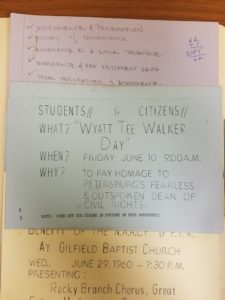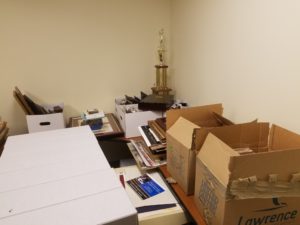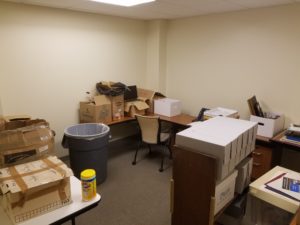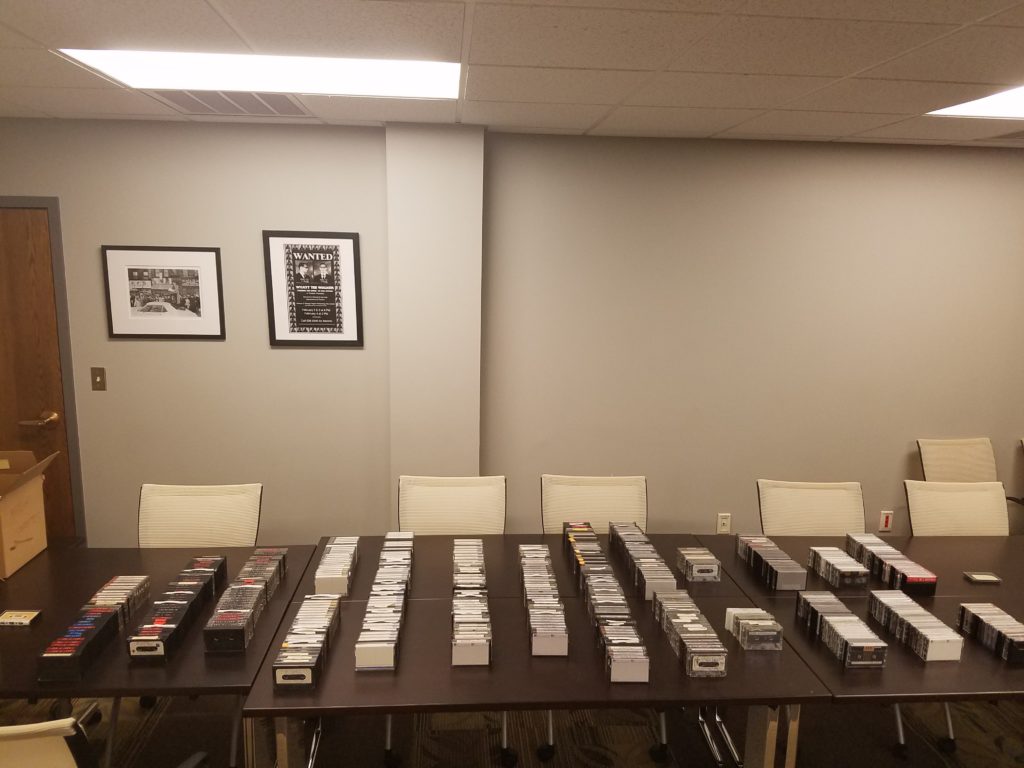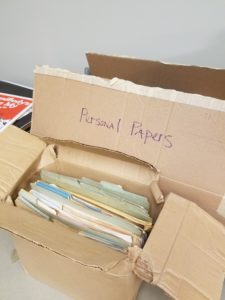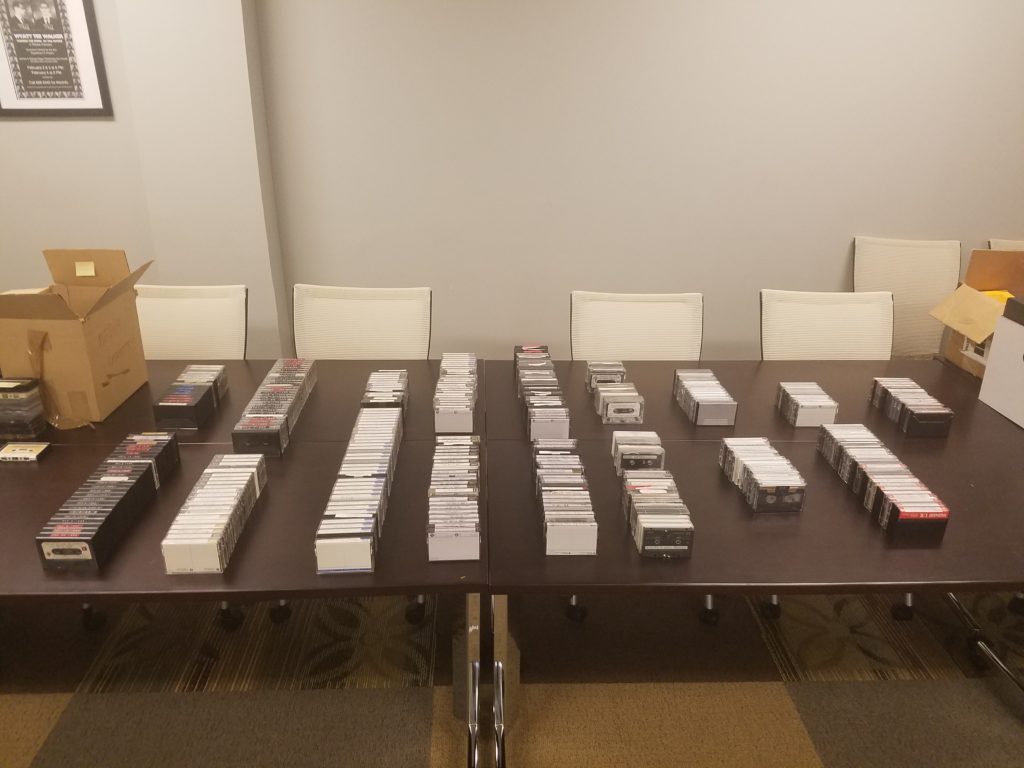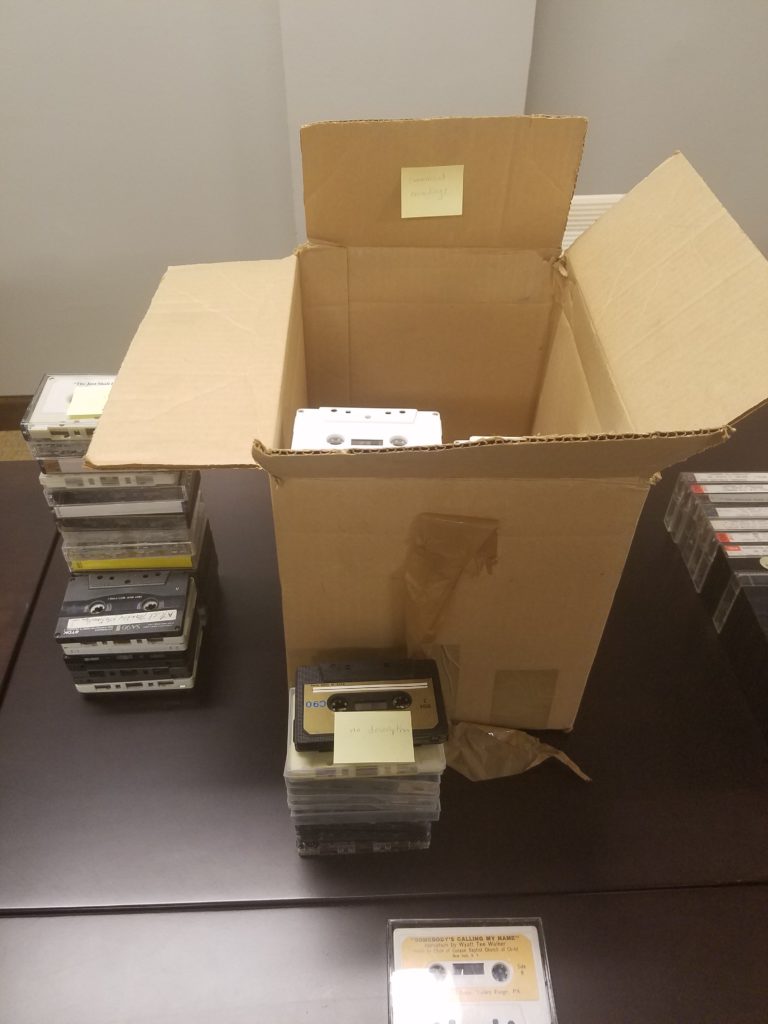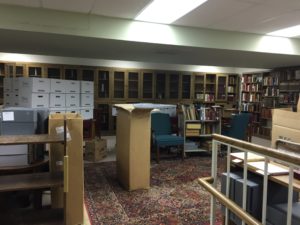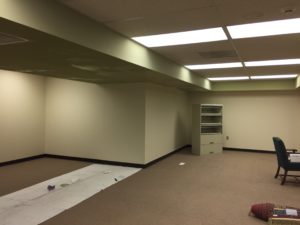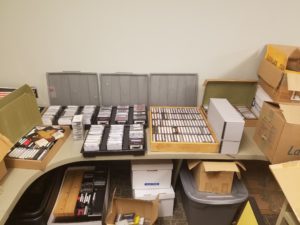(Note: This post was authored by Taylor McNeilly, Processing & Reference Archivist.) One of the most interesting things about processing a collection is some of the small, unimportant pieces of history you discover. For today’s #WyattWalkerWednesday post, I’d like to talk about a few items I’ve found recently while processing the Dr. and Mrs. Wyatt T. Walker Collection.
The first item I came across was in and of itself not that important. The SCLC had collaborated with a handful of other civil rights organizations in the south to develop a training program for the next generation of civil rights leaders, and this item is a press release or mailer publicizing the program and asking people to participate. Considering how active SCLC was in this period, this single mailer that sheds no light on the actual program is mostly insignificant, especially since the program has other records in the collection. However, at the end of the mailer is something quite interesting: Martin Luther King, Jr.’s signature.
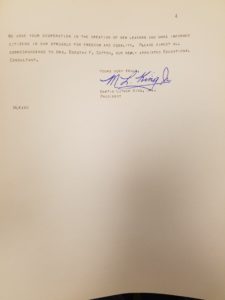
Signature of Dr. Martin Luther King, Jr. as it appears on a document found within the Dr. and Mrs. Wyatt T. Walker Collection.
MLK’s signature is of course well documented in many places, and it does appear elsewhere in the collection here. However, this was one of the first times I came across it unexpectedly and authentically, rather than as a stamp or photocopy. It is common practice for executives and celebrities to sign many documents with a copy of a signature, rather than signing each one by hand. In this instance, the signature appears to have been written by hand. While this isn’t momentous or historically significant, seeing MLK’s signature in person was an unexpected surprise.
You might be able to guess something about the second item I greatly enjoyed stumbling across, considering the title of this blog entry. That’s right: it touches on what very well might be the first-ever Wyatt Tee Walker Day.
While several cities have officially proclaimed Wyatt Tee Walker Days throughout Dr. Walker’s life, this handwritten advertisement seems to be less a official, municipal declaration than a celebration held by the community. Interestingly, this celebration occurs after Dr. Walker has moved on to his work at SCLC, and the item was found in SCLC records – indicating this was a celebration that Dr. Walker was notified of through SCLC, rather than through his previous post at Gilfield Baptist Church.
Since this is the only item pertaining to the 1960 Wyatt Tee Walker Day, we have no real record of what events might have occurred or how they would have celebrated “Petersburg’s fearless & outspoken dean of civil rights.” We also have no way to gauge just how popular the event was, or even to know who sponsored it or where it was held. This information may be in other archival collections or otherwise available to researchers, but for now it’s nice to know just that Dr. Walker was being recognized and celebrated as far back as 1960 by the communities he was working so passionately to help.
That’s all for this week! As always, please check back for future posts and any updates on the collection.

